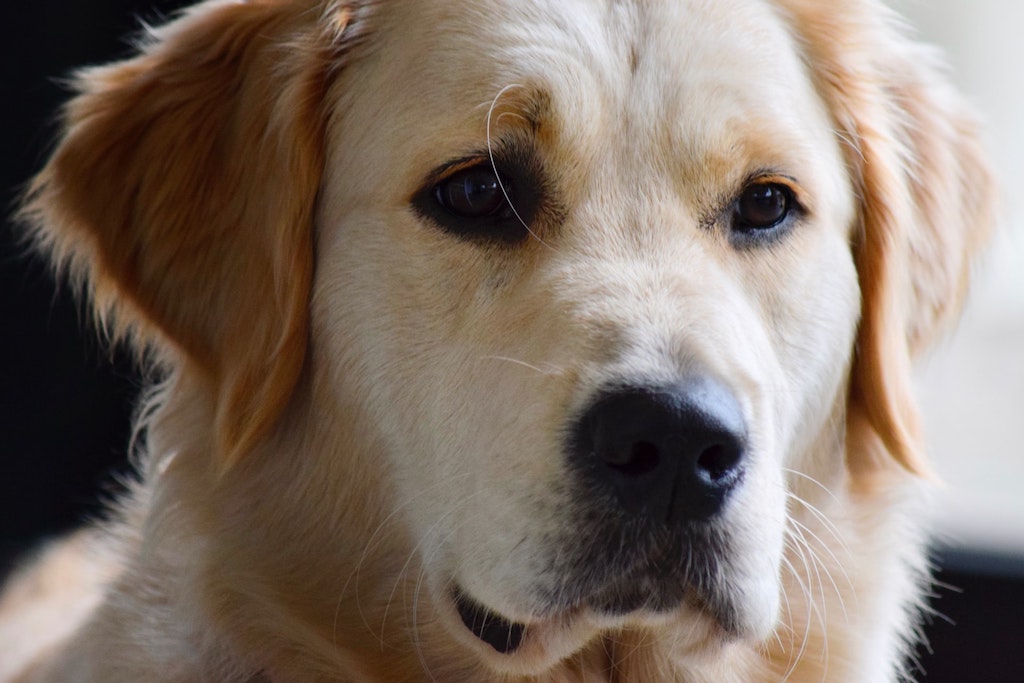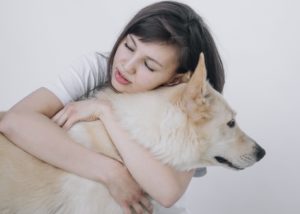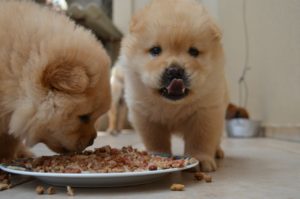Description
Golden Retrievers are a medium-large breed of dog with a strong and muscular physique, and a kind and gentle temperament. They were bred for hunting and retrieving, and have a broad chest, strong neck and powerful hindquarters. Despite their large size, this agile breed can run easily over rugged terrain due to their strong and athletic limbs.
Golden Retrievers have a broad head with a straight muzzle. The eyes are open and expressive, and the ears droop around the face. This is one of those breeds which will watch you intently when you speak, almost like they understand every word!
Living up to their name, Golden Retrievers come in just one basic color – golden! However, they come in many different shades, from white to light cream at one end of the spectrum to dark golden brown and red gold at the other. The coat is made up of two layers – a short dense undercoat and longer weather-resistant top coat. Golden Retrievers have longer fur feathering on the chest and back of the thighs, and a beautiful wavy tail.
This breed is a pack dog which needs to be around humans or other dogs – Golden Retrievers are not suited to being alone for long periods. They also have high levels of energy and need plenty of exercise. However, Golden Retrievers are easy to train and will rarely develop undesirable behaviors if cared for correctly.
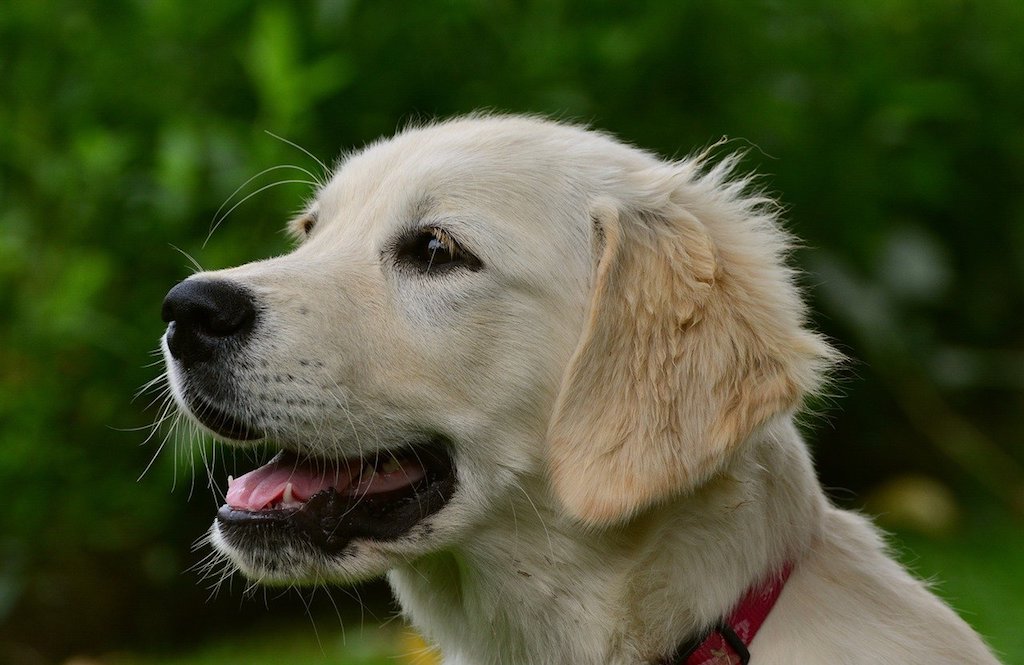
Common health problems
Golden Retrievers are generally a healthy breed of dog, but like all pedigree breeds, they are susceptible to certain health conditions. If you’re considering buying a Golden Retriever puppy then find a good breeder who has screened the parents for hereditary health conditions. This should include screening for hip dysplasia, elbow dysplasia, blood disorders and an eye examination.
Hip Dysplasia
Hip dysplasia is a hereditary condition which causes the hip joints to form improperly. This is a painful lifelong condition, which will eventually lead to arthritis of the hips. Dogs with this condition may require long-term medication, and suffer from reduced mobility in old age. In some cases, expensive surgical treatment is required.
It is unfortunately very common to see Golden Retrievers with weakness in the hindquarters, caused by hip dysplasia. If you are purchasing a new puppy it is essential to check with the breeder that the parents have been screened for hip dysplasia. Look for parents with a ‘hip score’ of 19 or below.
Elbow Dysplasia
Elbow dysplasia is a hereditary condition which occurs when the elbow joint develops abnormally. This causes forelimb lameness and limited movement of the elbows, resulting in arthritis of the elbow joints. The consequences are a painful and limited movement of the elbows and limping of the front legs.
Surgical treatment may reduce the symptoms of elbow dysplasia, but long-term medication may be required. Again, it is essential to look for a Golden Retriever puppy with parents that have been screened for elbow dysplasia, with a score of zero or one.
Von Willebrand’s Disease
Von Willebrand’s Disease is an inherited blood disorder. This condition interferes with the clotting ability of the blood, leading to abnormal bleeding. This may cause excessive hemorrhage after an injury or surgical treatment. Other symptoms include nosebleeds or bleeding gums.
Von Willebrand’s Disease is an incurable condition. Currently the only treatment available is blood transfusion from the blood of normal dogs. Golden Retrievers with this disease can lead normal lives, but caution must be taken if an injury occurs or if surgical treatment is required.
Progressive Retinal Atrophy
Progressive Retinal Atrophy (PRA) is a degenerative condition affects the photoreceptors in a dog’s eyes. This leads to a gradual loss of vision and eventually blindness. This is not a painful condition, but it can affect your Golden Retriever’s quality of life.
One of the first symptoms of PRA is reduced vision in poor light, also known as night blindness. The pupils of the eye may also look more dilated than normal, and you may notice that the eyes look reflective when light shines on them. There is currently no known treatment for PRA, but your vet will be able to advise on how to keep your Golden Retriever comfortable following a diagnosis.
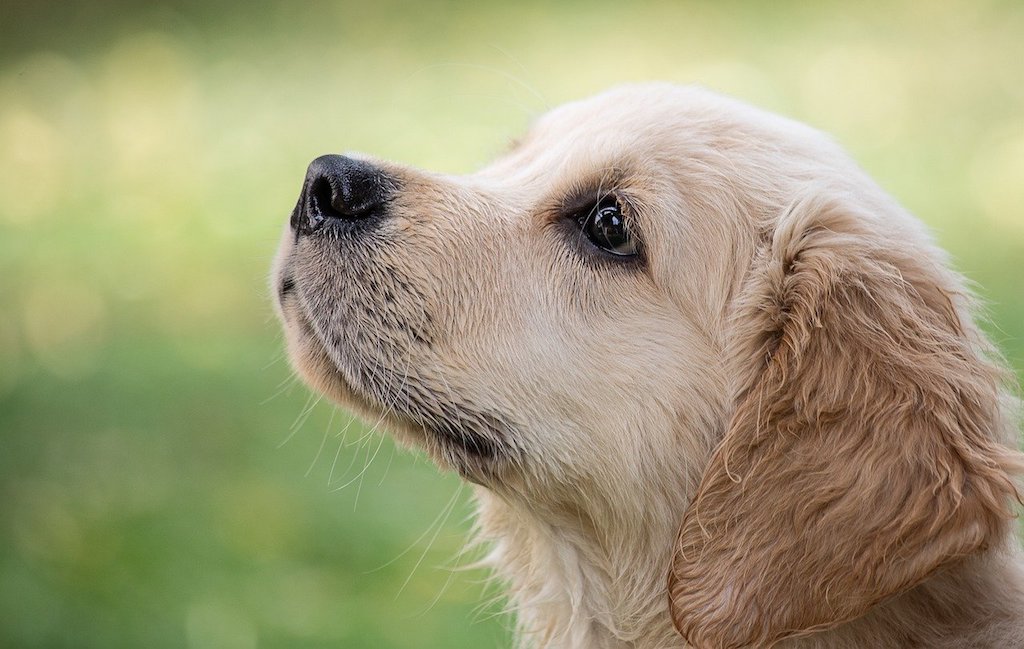
Personality traits
The Golden Retriever is a lively breed which is slow to mature – many continue their puppy-like behavior into old age! Most Golden Retriever puppies reach mental maturity at around three or four years of age. However, they will continue to be playful and high-energy throughout their lives.
This is a smart and obedient breed of dog. Golden Retrievers are gentle, friendly and patient, and get along well with children and other pets. However, don’t forget that these are big dogs and should be supervised when with small children and pets.
Like all retrievers, this breed loves to have something to carry in their mouth. Many Golden Retrievers will have a favorite toy which they will carry around, and they also like something hard to gnaw and chew.
Golden Retrievers require a lot of attention and playtime. This is a dog which wants to be part of family life, and will not thrive if left alone for long periods. Be prepared to include your Golden Retriever in as many activities as you can – the ideal breed for families who love the outdoor life!
Care
Golden Retrievers are generally quite easy to care for, but they do have some specific care needs to help prevent health problems. They are heavy shedders with a long thick coat, so regular grooming is essential. These energetic dogs also require plenty of exercise and mental stimulation otherwise behavioural problems may develop.
Grooming
Golden Retrievers are notorious shedders – be prepared to get used to hair everywhere if this is your breed of choice! To keep shedding to a minimum it is advisable to groom your Golden Retriever at least twice a week. Use a slicker brush to remove as much dead hair as possible.
Twice yearly, your Golden Retriever will go through a heavy moulting period. During the shedding season it may be necessary to groom your dog every day.
Check the ears regularly for signs of infection, and also grass seeds if your dog loves to rummage in the undergrowth. Keep the nails trimmed to prevent breakages and snagging – if you can hear them tapping on the floor, they are too long and need a pedicure. Brush the teeth daily to maintain good dental health and prevent dental disease.
Feeding
Golden Retrievers are very motivated by food – this is one of those breeds which will eat anything put in front of them! This means that they are prone to obesity, particularly in older age as activity levels decline. Golden Retrievers do not have any special dietary requirements and will normally thrive on a good quality complete diet.
To prevent obesity, weighing the food will help to accurately monitor your dog’s food intake. Split their daily food rations into at least two meals per day to prevent bloating. It is important to weigh your Golden Retriever regularly to monitor for weight gain.
Training
Golden Retrievers are easily motivated by food and praise, making them fun and rewarding dogs to train. They are intelligent and eager to please, and will respond well to clear and gentle instructions. As their name indicates, they are excellent at retrieving, and will play games of fetch all day long.
One of the great advantages of this breed is that once they learn something they rarely forget it. Paying attention to basic training when young will give your Golden Retriever puppy a good foundation for life. With their high energy levels, retrieving instincts and eagerness to please, Golden Retrievers are excellent at sports such as obedience training, field trials, hunting, and agility.
Exercise
This is a high energy breed which loves to run and play. Golden Retrievers require at least an hour of exercise daily, ideally split into two walks of thirty minutes or more. It is essential that they get the opportunity to run to burn off some of their energy – this is not a breed suited to short walks on the lead.
Golden Retrievers also need daily play time and the chance to roam free in an enclosed garden. They love to play games such as fetch, so be prepared to spend time each day throwing a ball or toy, whatever the weather. During the rest of the time your Golden Retriever will want to be involved in whatever the family are doing at home – this is not a breed which lazes on the couch all day!
Due to their susceptibility to orthopedic problems, you’ll need to take care when exercising your Golden Retriever puppy. Between the age of four and seven months this breed has a rapid growth spurt, making them vulnerable to bone disorders. Avoid letting your Golden Retriever puppy run and play on hard surfaces such as pavement until he’s at least two years old.
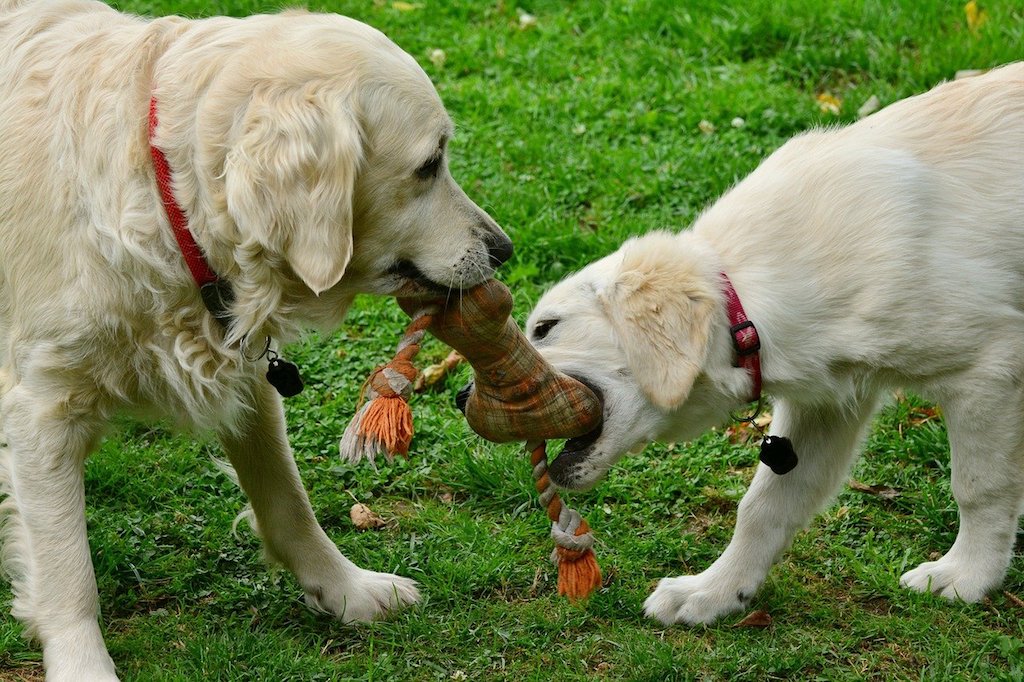
History
The Golden Retriever was first bred by the first Lord Tweedmouth, Dudley Marjoribanks. He wanted to develop the perfect retriever for his rugged and rainy estate in the Scottish highlands. His aim was to breed a dog which would be loyal and good tempered in the home, but also an attentive and reliable hunting companion.
Lord Tweedmouth started this process by crossing a Wavy-Coated Retriever with a Tweed Water Spaniel. Later on he crossed the offspring of these two breeds with bloodhounds, black retrievers and setters. It is these breeds which form the basis of the Golden Retriever we know and love today.
The Golden Retriever was officially recognised as a breed by The Kennel Club in England in 1911, although it was classed as ‘Retriever – Yellow or Golden’ until 1920. The American Kennel club first recognized the Golden Retriever breed in 1932, and it remains a popular breed to this day.
Interesting facts
- Golden Retrievers are a popular choice as service dogs. They are often trained as guide dogs, hearing dogs, and seizure or diabetic alert dogs.
- This breed is also often trained as therapy dogs, providing emotional support for people suffering from mental health disorders. In 2018 a Golden Retriever called Kol was awarded the American Kennel Club Humane Fund Award for Canine Excellence for his work supporting school children suffering from trauma.
- A Golden Retriever named Tonka was the recipient of the very first American Kennel Club Obedience Champion title in 1977. In the following two years the award was won by two different Golden Retrievers, cementing their reputation as one of the most obedient dog breeds.

